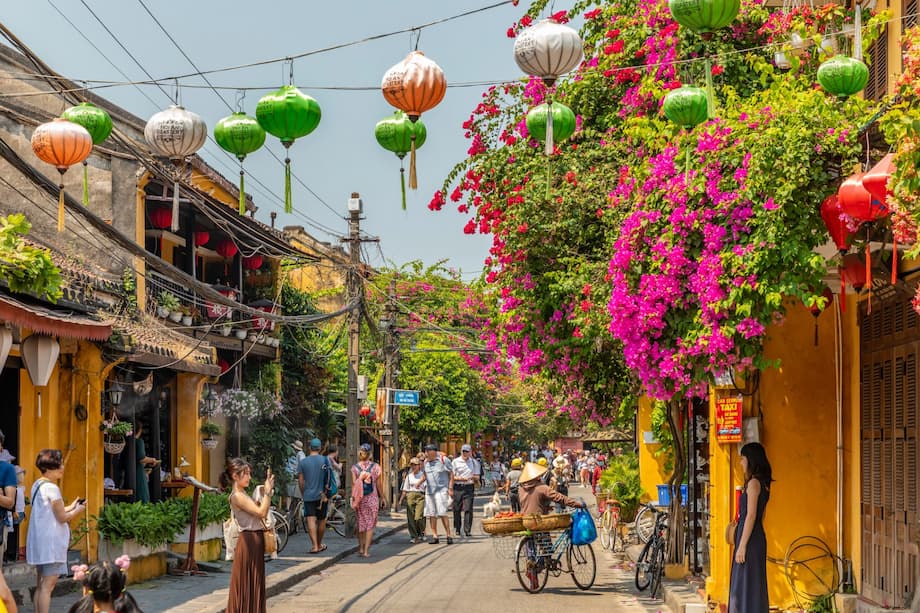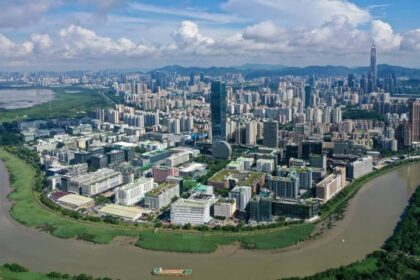Southeast Asia’s Tourism Comeback: A Region in Transition
Before the COVID-19 pandemic, Southeast Asia stood as one of the world’s most dynamic tourism regions. In 2019, the six major markets—Thailand, Malaysia, Singapore, Vietnam, Indonesia, and the Philippines—welcomed over 127 million international visitors, with Thailand alone drawing nearly 40 million. The pandemic, however, brought this momentum to a screeching halt. In 2020, international arrivals collapsed to just 2.6 million, devastating economies reliant on tourism and hospitality. Now, five years later, the region’s recovery is in full swing, but the pace and shape of that rebound are anything but uniform.
- Southeast Asia’s Tourism Comeback: A Region in Transition
- Vietnam’s Meteoric Rise: From Recovery to Regional Leader
- Thailand: Still a Giant, But Facing New Challenges
- Malaysia, Singapore, and Indonesia: Steady Progress and Unique Dynamics
- The Philippines: Struggling to Regain Momentum
- The Role of Chinese Tourists and Digital Platforms
- Policy, Sustainability, and the Road Ahead
- In Summary
By 2024, Southeast Asia had clawed back to 114 million tourist visits—about 89 percent of pre-pandemic levels. Yet, beneath this headline figure lies a story of divergent fortunes, shifting travel patterns, and new regional leaders. Vietnam, once a rising star, has now emerged as the fastest-recovering and third-most-visited country in the region, overtaking Singapore and closing in on Malaysia and Thailand. Meanwhile, traditional powerhouses like Thailand and the Philippines face headwinds, and the role of Chinese travelers and digital platforms is reshaping the tourism landscape.
Vietnam’s Meteoric Rise: From Recovery to Regional Leader
Vietnam’s ascent is the most striking development in Southeast Asia’s post-pandemic tourism story. In 2024, the country welcomed 17.5 million international visitors—98 percent of its 2019 total—edging ahead of Singapore and trailing only Malaysia (25 million) and Thailand (35 million). This rapid recovery is not only a testament to Vietnam’s resilience but also to its strategic policy choices and evolving tourism offerings.
Several factors underpin Vietnam’s success:
- Progressive Visa Policies: Vietnam has aggressively expanded visa waivers, now offering visa-free entry to travelers from 25 countries and, since August 2023, three-month tourist visas to citizens of all nations. The e-visa process has been streamlined, making entry easier and more attractive for foreign visitors.
- Expanded Air Connectivity: The launch of nonstop flights, including the first-ever direct route between the United States and Vietnam, has opened new markets. The upcoming Long Thanh International Airport promises to further boost capacity and convenience.
- Luxury and Sustainable Tourism: Vietnam’s hospitality sector is booming, with new high-end hotels, the arrival of the Michelin Guide, and a focus on sustainable and experiential travel. Cities like Da Nang, Nha Trang, and Ho Chi Minh City are now top destinations for eco-conscious tourists, while Phu Quoc Island is emerging as a luxury hotspot.
- Targeted Promotion and Digital Transformation: Aggressive marketing campaigns and a new web portal for e-visas have made Vietnam more accessible and visible to global travelers.
Vietnam’s tourism boom is broad-based. In January 2025 alone, the country welcomed over 2.1 million international arrivals—a 36.9 percent jump from the previous year. Growth is especially strong from China, South Korea, India, and Western Europe. Phu Quoc, Halong, and Danang are leading the charge, offering world-class beaches, UNESCO heritage sites, and integrated entertainment ecosystems. The rise of destination weddings, particularly among affluent Indian families, and the surge in luxury travel are reshaping Vietnam’s image from a budget destination to a hub for high-end experiences.
Vietnam’s ambitions are clear: authorities aim to attract 22–23 million international visitors in 2025 and aspire to overtake Malaysia as the region’s second-most-visited country by 2030. As the country invests in infrastructure, marketing, and regulatory reform, it is positioning itself as a challenger to Thailand’s long-held tourism crown.
Thailand: Still a Giant, But Facing New Challenges
Thailand remains Southeast Asia’s top destination, with 35–36 million international arrivals in 2024. Yet, the pace of recovery has slowed, and the country faces mounting challenges—especially in attracting Chinese tourists, who were once its largest source market.
Before the pandemic, Chinese visitors accounted for over 11 million arrivals annually. In 2024, that number is expected to reach only about 5 million, with the Tourism Authority of Thailand (TAT) targeting 6.9 million by 2026. Several factors explain this sluggish rebound:
- Safety and Perception Issues: Negative publicity, social media discourse, and concerns over safety have made some Chinese travelers feel less welcome in Thailand.
- Geopolitical and Economic Headwinds: China’s economic slowdown, government promotion of domestic tourism, and increased competition from destinations like Vietnam and Japan have diverted Chinese tourists elsewhere.
- Changing Travel Patterns: Chinese travelers are now more likely to travel independently or in small groups, rather than in large tour groups, and are seeking new experiences beyond traditional hotspots.
Thailand is responding with targeted marketing, expanded air routes, and efforts to attract high-value niche markets such as MICE (meetings, incentives, conferences, and exhibitions), luxury travel, and destination weddings. The government is also working to strengthen bilateral ties and improve safety perceptions. Despite these efforts, the prospect of a return to pre-pandemic Chinese arrival numbers remains distant.
Meanwhile, Thailand’s reliance on tourism for economic stability makes the slow recovery a source of concern. The country is also grappling with issues of overdevelopment and environmental strain, particularly in destinations like Phuket and Chiang Mai, where extreme weather and seasonal haze are increasingly influencing travel decisions.
Malaysia, Singapore, and Indonesia: Steady Progress and Unique Dynamics
Malaysia is quietly closing in on its pre-pandemic performance, with 25 million international arrivals in 2024—just shy of its 2019 peak. When day visitors (primarily from Singapore) are included, Malaysia actually surpasses Thailand in total visitor traffic, reaching 38 million. However, the high proportion of short-term, cross-border travelers means the economic impact per visitor is lower than in countries attracting longer-stay tourists.
Singapore, long a regional hub for business and leisure travel, is also seeing a steady recovery. The city-state is expected to surpass 16.5 million tourists in 2025, buoyed by its reputation for safety, world-class infrastructure, and a strong events calendar. Singapore’s focus on high-value tourism and business travel has helped insulate it from some of the volatility seen elsewhere in the region.
Indonesia, with its vast archipelago and iconic destinations like Bali, is experiencing a more gradual recovery. International arrivals are on track to exceed 14 million in 2025, matching 2017 levels but still below the pre-pandemic peak. For Indonesia, the slower pace may be a blessing in disguise, allowing time to address longstanding issues such as overdevelopment, pollution, and the need for more sustainable tourism models. The rise of digital platforms and social media is also helping lesser-known destinations gain visibility among international travelers.
The Philippines: Struggling to Regain Momentum
The Philippines, despite its natural beauty and vibrant culture, has struggled to recapture its pre-pandemic tourism momentum. In 2024, the country attracted only 5.4 million international visitors—just 66 percent of its 2019 total. Several factors contribute to this lagging recovery:
- Limited Air Connectivity: The Philippines has fewer direct international flights compared to regional competitors, making access more challenging for many travelers.
- Visa and Regulatory Hurdles: Complex visa requirements and bureaucratic processes have deterred some potential visitors.
- Competition from Neighbors: As Vietnam, Thailand, and Malaysia ramp up their tourism offerings and marketing, the Philippines faces stiffer competition for international tourists.
To reverse this trend, the Philippines is working to expand air routes, streamline visa processes, and promote new destinations beyond traditional hotspots like Boracay and Palawan. However, the road to full recovery remains steep.
The Role of Chinese Tourists and Digital Platforms
Chinese travelers have long been the backbone of Southeast Asia’s tourism industry. Their return is crucial for a full regional recovery, but the landscape is changing. While China’s reopening in 2023 sparked optimism, ongoing economic challenges, trade tensions, and shifting travel preferences have tempered expectations.
One of the most significant new trends is the influence of digital platforms like Xiaohongshu (often called “China’s Instagram”). With over 300 million monthly users, Xiaohongshu has become the go-to travel guide for young Chinese tourists, offering user-generated reviews, travel tips, and curated lists of attractions. The platform has:
- Driven Chinese tourists to lesser-known destinations in Southeast Asia, such as Laos and remote parts of Indonesia.
- Helped local businesses recover by connecting them directly with Chinese travelers seeking unique experiences.
- Fostered the rise of “daka” tourism, where travelers seek out photogenic spots to share on social media, sometimes at the expense of quality or safety.
While Xiaohongshu and similar platforms are fueling new travel trends and supporting local economies, they also present challenges. The focus on aesthetics can sometimes lead to overcrowding at certain sites or even safety risks, as seen in incidents at Indonesia’s Ijen volcano. In response, platforms are adding safety warnings and encouraging responsible travel.
Policy, Sustainability, and the Road Ahead
The pandemic exposed the vulnerabilities of economies heavily reliant on tourism. As Southeast Asia rebuilds, policymakers and industry leaders are rethinking their strategies to ensure a more resilient and sustainable future. Key themes include:
- Sector-Based Recovery: Reports from the Asian Development Bank and other institutions emphasize the need for targeted support to core sectors like tourism, agro-processing, and digital trade. Multistakeholder taskforces and regional cooperation are seen as essential for building resilience.
- Sustainable and Inclusive Tourism: There is a growing emphasis on health and hygiene, proximity tourism (traveling closer to home), and environmentally sustainable practices. Vietnam and Malaysia, for example, are leading the way in promoting eco-friendly tours and sustainable hospitality.
- Digital Transformation: The acceleration of digital adoption—both in marketing and operations—is helping businesses reach new markets and adapt to changing traveler expectations.
- Regional Integration: Attempts at creating a shared ASEAN visa have so far faltered due to political and competitive tensions, but deeper cooperation remains a long-term goal.
Extreme weather events, such as typhoons, floods, and haze, are increasingly influencing travel patterns and prompting calls for more climate-resilient infrastructure and crisis management. The region’s ability to adapt to these challenges will shape its tourism future.
In Summary
- Southeast Asia’s tourism recovery is robust but uneven, with Vietnam emerging as the fastest-growing and third-most-visited country in the region.
- Vietnam’s success is driven by progressive visa policies, expanded air connectivity, luxury and sustainable tourism offerings, and aggressive digital marketing.
- Thailand remains the top destination but faces challenges in attracting Chinese tourists and addressing sustainability concerns.
- Malaysia and Singapore are seeing steady recoveries, while Indonesia’s gradual rebound may help address overdevelopment and environmental issues.
- The Philippines lags behind, hindered by limited connectivity and regulatory hurdles.
- Chinese travelers and digital platforms like Xiaohongshu are reshaping travel patterns and supporting local businesses, but also present new challenges.
- Policymakers are focusing on sector-based recovery, sustainability, digital transformation, and regional cooperation to build a more resilient tourism industry.
- The future of Southeast Asian tourism will depend on adaptability, innovation, and the ability to balance growth with sustainability and inclusivity.












